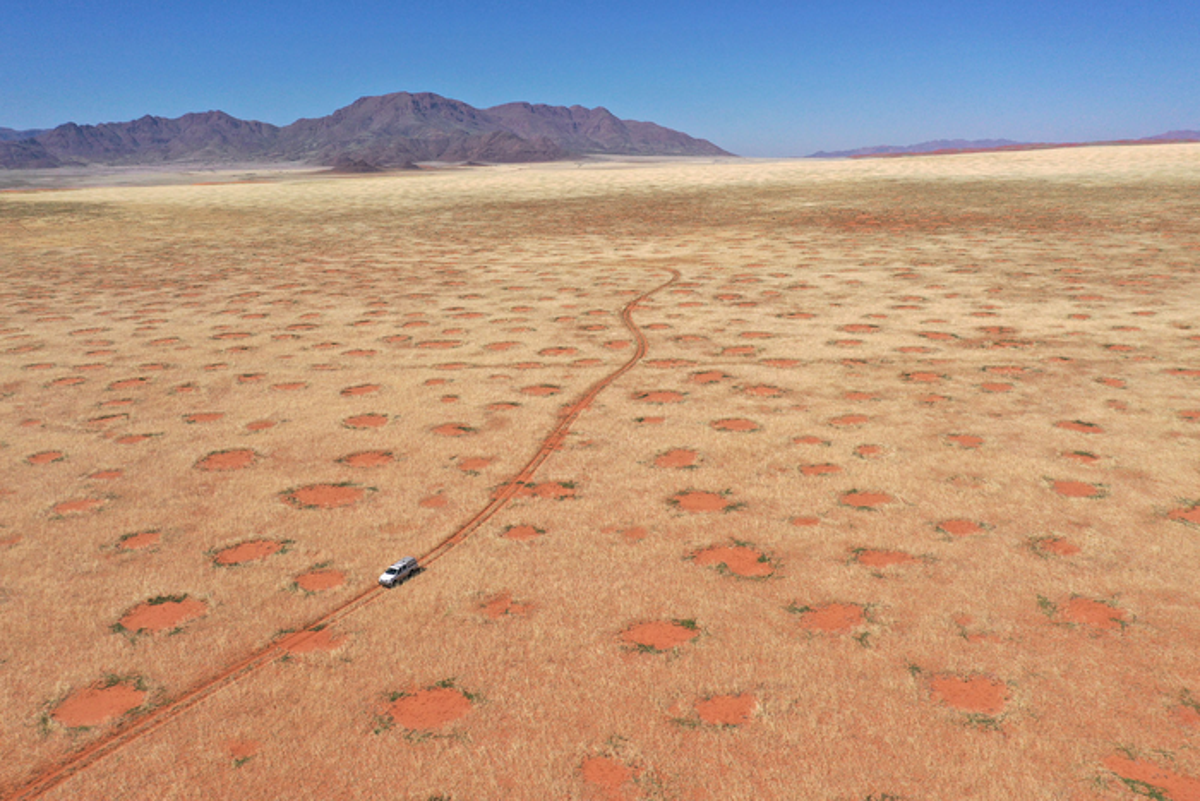
Strange “fairy circles” in Namibia’s grasslands have puzzled scientists for nearly five decades, but a new study has now shed more light on the baffling phenomenon.
Millions of circular holes, each about a few metres wide, can be found in the coastal desert region of Namib, around 80-140km from the Atlantic shoreline.
These holes create a recognisable pattern that can be seen for miles around.
Over the years, scientists have hypothesised that either termites are responsible or that plants somehow managed to organise themselves into these patterns.
But a new study, published recently in the journal Perspectives in Plant Ecology Evolution and Systematics, assessed sporadic rain events in numerous desert regions and analysed grasses, their roots and shoots, as well as potential termite root damage to explain these patterns.
It found the “fairy circles” are caused by plant water stress.
Researchers, including those from the University of Göttingen in Germany, found that the grasses themselves grow in such a self-organised geometrical formation, enabling their survival in the extremely resource-poor environment.
They installed soil-moisture sensors in and around the fairy circles to record the soil-water content at 30-minute intervals starting in the dry season of 2020 to the end of the rainy season of 2022.
Scientists also studied how the new emerging grasses around the circles affected the soil water within and around the circles, and also assessed the differences in water infiltration between the inside and outside of circles in 10 regions across the Namib.
The findings revealed that about 10 days after rainfall, the grasses were already starting to die within the circles while most of the interior area of the circles did not have grass germination at all.
About 20 days after rainfall, the struggling grasses within the circles were completely dead while the surrounding grasses were green.
Scientists then examined the roots of the grasses from within the circles and compared them to the green grasses on the outside.
They found that the roots within the circles were as long as, or even longer than, that outside, indicating that the grasses were putting effort into the growth of roots in search of water.
Researchers, however, did not find any evidence of termites feeding on roots and it was not until 50-60 days after rainfall that root damage became more visible on the dead grasses.
“The sudden absence of grass for most areas within the circles cannot be explained by the activity of termites because there was no biomass for these insects to feed on,” explained Stephan Getzin, a co-author of the study.
“But more importantly, we can show that the termites are not responsible because the grasses die immediately after rainfall without any sign of creatures feeding on the root,” Dr Getzin said.
Scientists also found the decline in soil water inside and outside of the circles was very slow after initial rainfall when grasses were not yet established.
But when the surrounding grasses were well established, the decline in soil water after rainfall was very fast in all areas, even though there were almost no grasses within the circles to take the water.
“Under the strong heat in the Namib, the grasses are permanently transpiring and losing water. Hence, they create soil-moisture vacuums around their roots and water is drawn toward them,” Dr Getzin explained.
“Our results strongly agree with those of researchers who have shown that water in soil diffuses quickly and horizontally in these sands even over distances greater than seven metres,” he added.
Scientists said the grasses act as “ecosystem engineers” and benefit directly from the water resource provided by the vegetation gaps.
“In fact, we know related self-organised vegetation structures from various other harsh drylands in the world, and in all those cases the plants have no other chance to survive except by growing exactly in such geometrical formations,” Dr Getzin said.
For all the latest Science News Click Here
For the latest news and updates, follow us on Google News.

